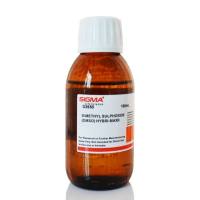Killer toxin activity is commonly determined by the well test (1 ), which ensures the inhibition zone on a substratum of sensitive strain cells. The Rhodamine B assay described in Chapter 31 is based on estimation of the fraction of killed cells, which stain with the fluorescent dye Rhodamine B. Nevertheless, this test cannot be used to assess the effect of Kluyveromyces lactis killer toxin, since it does not render sensitive cells permeable to this stain but merely causes a Gl block in the cell cycle (2 ). It was, however, expected that killing yeast cells other than by the toxin, e.g., with nystatin, would also make them stainable by Rhodamine B. A clear-cut killing effect of nystatin was only observed in exponentially growing cells, whereas stationary cells were much less susceptible (3 ,4 ). At the exponential growth phase, nystatin-treated Saccharomyces cerevisiae cells stain with Rhodamine B, if they have not previously been exposed to killer toxin produced by Kluyveromyces lactis . This finding constitutes the principle of a method for estimating the activity of this toxin (5 ). The fraction of unstained cells increases in dependence on concentration of killer toxin in medium. As the lowered sensitivity of exponentially growing S. cerevisiae culture to nystatin after exposure to this toxin is owing to its inhibitory effect, it would probably be possible to determine in similar manner the activity of any inhibitor that suppresses the growth of cells in the exponential phase. The main disadvantage of the original version of the nystatin-Rhodamine B assay (5 ) is that the protective effect against nystatin caused by treating exponentially growing cells with toxin, develops rather slowly. An improved nystatin-Rhodamine B assay presented here is based on the observation that the susceptibility to nystatin in the absence of killer toxin is fully developed in all cells after 3 h of cultivation of diluted stationary culture at 28�C, whereas in the presence of appropriately concentrated samples of killer toxins all stationary phase cells are protected. Determination of the intermediate concentrations of killer toxin capable of protecting 50% of cells against nystatin treatment (PD50 ) can be used to characterize the relative activity of a killer toxin preparation.






